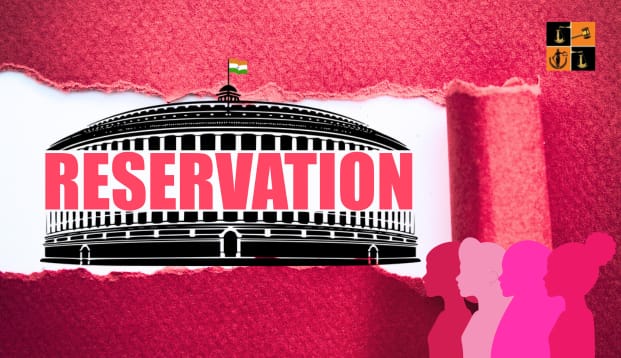It has been 72 years since reservation in educational institutions and jobs for SC and ST communities of India, introduced by our constitution makers, has been extended to the next 2030 years in periodic intervals of 10 years. The new objective was to uplift the people of disadvantaged sections by facilitating reserved quotas in jobs and education, which was later extended to OBC people. During this period, it has been examined by various scholars and policy makers and the question of rationality has been evaluated. Some of them gave positive opinions in its favour while some in the negative. Thus, this paper is an academic exercise to identify the positive and negative aspects of the political intervention of reservation. The debate on the reservation system has been analysed in the larger field of hidden studies and political system within India.
Introduction
India, a diverse and complex country, has long grappled with the challenges of social inequality and traditional prejudice. The Indian government established a system of reserves or affirmative action to address this deep-rooted imbalance, which initially attempted to empower the marginalized and disadvantaged. This strategy has changed significantly throughout time as a result of the complex interaction of historical, political and sociological forces. According to the National Sample Survey report, 20 percent of Indians are members of the Scheduled Castes (SC), 9 percent Scheduled Tribes (ST) and 41 percent Other Backward Classes (OBC). This suggests that about 70% of the population falls into the groups that are currently reserved, while 30% belong to the general category.
Although 41% of the population are OBCs, the exact number of OBCs in India is still heavily disputed and some social scientists claim that party politics has distorted census data. Statistically, the Mandal Commission and the National Sample Survey put it down to a small number, but it is widely believed that the number is large. The SC community in India is made up of about 260 million individuals who enjoy a 15% reservation share in the government sector. The Scheduled Tribes make up about 9% reservation share, with an estimated number of over 1.17 million. The population of the general category is estimated to be 1.21 billion as per the 2011 census. The general category, called the unreserved category, includes upper castes and creamy layer OBCs.
India is the only democracy in the world that has explicitly enacted legal and constitutional measures to compensate for discrimination – commonly called reservations – for the development of historically oppressed and socially backward sections of society. It has been attempting to find a balance between demands for compensating discrimination in favour of specific castes and groups and its commitment to a broad definition of equality in terms of fundamental freedoms. India has demonstrated that such a path is not only possible but is also something that improves the democratic process, dispelling the notion that these two goals are incompatible. It has evolved a sophisticated and complex system of reservation over time.
(Suri, 1994) Articles 330, 332 and 334 of the Constitution contain special provisions relating to reservation for Scheduled Castes and Scheduled Tribes in the Lok Sabha and the Legislative Assemblies of the States and in the services and posts under the State. Initially the period of reservation was only 10 years but with various amendments it kept on increasing. The Constitution (104th Amendment) Act, 2019, increased it to 80 years. The regular increase of 10 years at the end of the tenure from 1962 till date, which has now increased to 80 years, provokes to ask relevant questions 1. What intention encouraged the government to increase the period of reservation? 2. Is there any political advantage to the ruling political party in increasing the tenure?’ Thus this paper is a modest attempt to examine the positive and negative dimensions of reservation and its impact.
Positive Aspects Of Reservation
1. Reducing Historical Injustice: In order to rectify past injustices and prejudice against Scheduled Castes (SCs), Scheduled Tribes (STs) and Other Backward Classes (OBCs), the reservation system has proven to be crucial. By offering possibilities in politics, work and education, it seeks to undo decades of social and economic marginalisation. Impact: Breaking the cycle of poverty and disenfranchisement has led to an increase in the social status and economic advancement of these communities.
2. Inclusivity and Diversity: Reservation has diversified employment and educational institutions, ensuring that underrepresented groups are represented. It promotes a society that is more diverse and inclusive. Impact: It encourages exposure to other perspectives, opportunities and cultures, enhancing the country’s social fabric.
3. Empowerment: By providing people of disadvantaged origins access to education and employment prospects that they would not otherwise have, the policy empowers them. Impact: It has promoted social mobility, helping individuals and families to escape poverty and advance their socio-economic status.
4. Democratic Representation: Ensuring political participation of marginalised groups in legislative bodies and local governments ensures that their opinions are heard. Impact: Strengthens democracy, by addressing past under-representation in decision-making.
Negative Aspects Of Reservation Systems
1. Reverse Discrimination: According to critics, reservations can result in reverse discrimination, where people from non-reserved groups may have lesser prospects in education and employment. Impact: As a result, these people may become angry and frustrated, leading to social unrest.
2. Meritocracy Question: Some claim that reservations undermine the ideal of meritocracy because people with lower marks or credentials may be given employment than people with higher qualifications. Impact: When merit-based selection processes are perceived to be corrupted, questions are raised regarding fairness and effectiveness.
3. Creamy Layer Problem: The problem of the “creamy layer” comes to the fore in the case of OBC reservations. Reservations may benefit relatively affluent members of OBC groups rather than others who are genuinely in need. Impact: As a result, reservations may be less successful in addressing socioeconomic differences within OBCs.
4. Administrative Difficulties: Managing and implementing reservation policies can be difficult from an administrative perspective. It may be difficult to ensure that benefits reach the intended recipients and that misuse of reservations is prevented. Impact: The effectiveness of the policy may be hampered by bureaucratic inefficiencies and implementation challenges.
5. Stigmatization: Stereotypes and prejudices can sometimes undermine the self-esteem and social integration of reservation beneficiaries. Impact: Stigmatization may prevent people from privileged groups from achieving full integration and empowerment.
6. Division: With many communities and interest groups debating their issues, discussions on reservations can create social and political tensions. Impact: This polarization and division can make it more difficult to establish common ground and solve major societal problems.
Read Also:
- Reservation In India
- Reservation System In India: Advantages And Disadvantages
- Reservation According to Gender in India
- State-Wise Reservation Percentages In India
- Reservation System According to Religion






